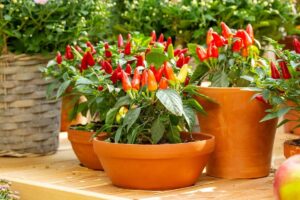
Dragon fruit, with its vibrant colors and unique appearance, has captured the imagination of gardeners and fruit enthusiasts alike. While traditionally grown in tropical climates, it is entirely possible to cultivate this exotic fruit in pots, bringing a touch of the tropics to your own backyard or balcony. In this article, we’ll explore the essential steps and considerations for successfully growing dragon fruit in pots.
I. Introduction
Fascination with Dragon Fruit Cultivation Dragon fruit, also known as pitaya, is prized for its striking appearance and delicious flavor. With its vibrant pink or yellow skin and speckled flesh dotted with tiny black seeds, it’s no wonder that growing dragon fruit has become a popular hobby for gardening enthusiasts around the world.
Benefits of Growing Dragon Fruit in Pots While dragon fruit is typically grown in tropical regions with warm climates, cultivating it in pots offers several advantages. Potted plants can be easily moved to follow sunlight or sheltered from harsh weather conditions. Additionally, growing dragon fruit in pots allows for greater control over soil quality and drainage, ensuring optimal growing conditions for this exotic fruit.
II. Choosing the Right Pot and Soil
Pot Size and Material Considerations Selecting the appropriate pot size is crucial for the successful growth of dragon fruit. Ideally, choose a pot that provides ample room for the plant’s root system to spread out. Terracotta pots are preferred for their porous nature, which allows for better aeration and moisture regulation compared to plastic or metal containers.
Soil Composition and Drainage Dragon fruit thrives in well-draining soil that is rich in organic matter. A blend of cactus or succulent potting mix and perlite or coarse sand works well for potted dragon fruit. Ensure that the soil has good drainage to prevent waterlogging, which can lead to root rot and other issues.
III. Planting and Positioning
Propagation Methods Dragon fruit can be propagated from seeds or cuttings. Growing from seeds requires patience, as it may take several years for the plant to reach maturity and produce fruit. Alternatively, using cuttings from mature plants allows for faster growth and fruiting. Plant the cuttings or seeds in well-draining soil and provide adequate warmth and moisture for germination or rooting.
Optimal Positioning for Potted Dragon Fruit Place potted dragon fruit in a sunny location where they can receive at least six to eight hours of direct sunlight per day. However, provide protection from intense midday sun, especially during hot summer months. Shielding the plants from strong winds and extreme temperatures is also important for their health and growth.
IV. Watering and Fertilizing
Watering Frequency and Methods Dragon fruit plants prefer consistent moisture but are susceptible to root rot if overwatered. Water the plants thoroughly when the top inch of soil feels dry to the touch, allowing excess water to drain away. During the growing season, increase watering frequency to support active growth and fruit development.
Fertilizing Regimen Feed potted dragon fruit with a balanced fertilizer formulated for cacti or succulents during the growing season. Apply fertilizer every four to six weeks, following the manufacturer’s recommendations for dosage and application method. Avoid excessive fertilization, as it can lead to nutrient imbalances and damage to the plant.
V. Maintenance and Support
Pruning and Training Techniques Encourage bushier growth and increased fruit production by pruning and training dragon fruit plants. Remove any dead or damaged stems and prune back excessive growth to maintain a compact shape. Use stakes or trellises to support the sprawling growth habit of dragon fruit and prevent the heavy fruit-laden branches from breaking.
Pest and Disease Management Monitor potted dragon fruit for signs of pests such as aphids, mealybugs, or scale insects, which can feed on the plant’s sap and weaken its growth. Treat infestations promptly with insecticidal soap or neem oil, avoiding chemical pesticides that may harm beneficial insects and pollinators. Practice good sanitation and hygiene to prevent the spread of fungal diseases such as stem rot or powdery mildew.
VI. Conclusion
Recap of Key Considerations for Growing Dragon Fruit in Pots Successfully growing dragon fruit in pots requires careful attention to pot selection, soil composition, planting techniques, and maintenance practices. By providing the right growing conditions and support, gardeners can enjoy a bountiful harvest of delicious dragon fruit from their own potted plants.
Encouragement for Enthusiasts to Embark on Their Dragon Fruit Growing Journey Whether you’re a seasoned gardener or a novice plant enthusiast, growing dragon fruit in pots offers a rewarding and enjoyable experience. Experiment with different varieties, propagation methods, and growing techniques to discover what works best in your unique growing environment. With patience, dedication, and a little bit of tropical flair, you’ll soon be enjoying the sweet rewards of homegrown dragon fruit straight from your own potted plants.


